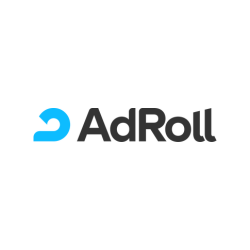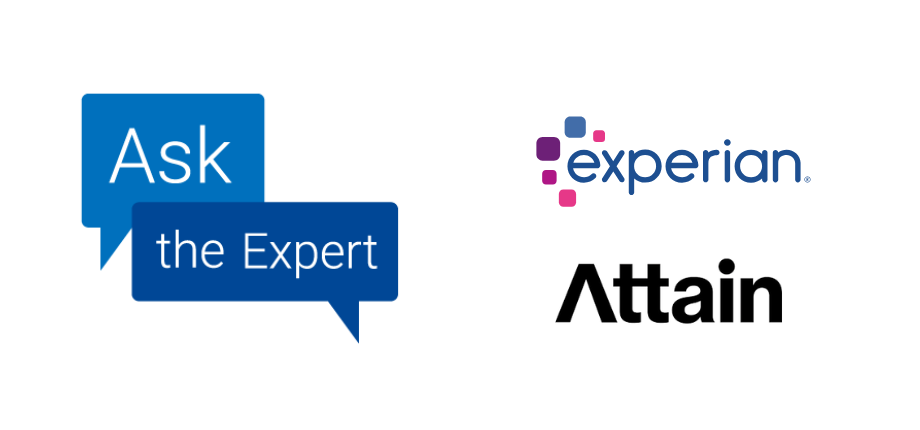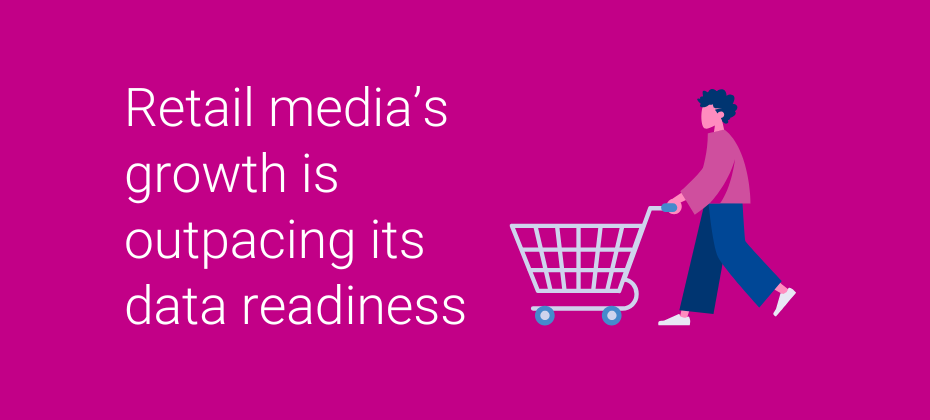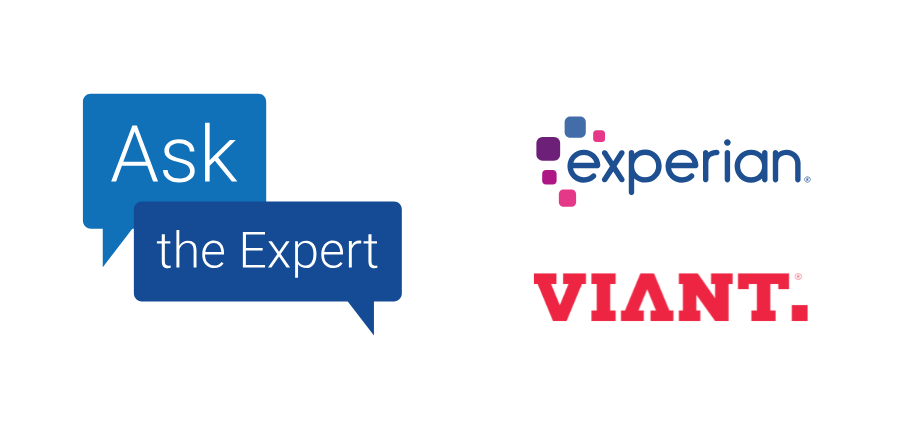At A Glance
As CTV viewership grows, marketers face challenges in targeting and measurement across fragmented platforms. Identity resolution and audience strategies, supported by Experian’s syndicated audiences and privacy-safe solutions, help DSPs and advertisers reach high-value audiences, improve campaign accuracy, and drive measurable outcomes.In our Ask the Expert Series, we interview leaders from our partner organizations who are helping lead their brands to new heights in AdTech. Today’s interview is with George Castrissiades, General Manager of Connected TV at AdRoll.
Premium reach and fragmentation
As viewer attention fragments across platforms, how should marketers redefine “premium reach” in CTV to prioritize engagement and audience quality over scale alone?

A few years ago, ad supported streaming over-indexed on younger adults, those without much financial history and much more budget conscious. It would have been fair for B2B brands to assume that maybe they weren’t going to find their C-Suite audiences on those channels, and so connected TV(CTV) was positioned as a top of funnel tactic aimed at retail. But that’s all changed – ad-free prices are going up, and ad supported tiers are the norm across the majority of channels. 66% of adults have at least one ad supported streaming channel, and adults today spend nearly as much time streaming movies and TV as they spend on their mobile phones. Now that ad viewing audiences on CTV really span the full spectrum of demo, techno, and firmographic segments, savvy marketers should partner with platforms that offer breadth and depth of targeting and measurement to find the highest value audiences wherever they’re watching CTV and serve them highly relevant ads that draw their attention towards the screen. I know I’m jumping out of my seat whenever I see an AdTech or MarTech ad.
Identity and relevance
What does a strong identity framework unlock for delivering household- and person-level relevance across screens, and how does it reshape audience planning?

In privacy-safe ecosystems, people want to share less data and log in to websites and browsers less frequently. If you can’t resolve a household ID to a CTV device through Safari and other sources of obfuscated identity, you’re going to end up losing a lot of signal along the way. On top of that, targeting smaller, higher-value audiences means this attrition can have a profound impact on your ability to build meaningful reach and use audience forecasts to predict scale. A strong identity framework is the key to maintaining as much of your planned audience as possible and staying true to initial forecasts.
AI and outcome planning
How is AI evolving CTV from tactical bidding to strategic outcome planning, and what mechanisms are in place to validate true performance lift?

Tomorrow isn’t guaranteed, especially not in advertising. Audiences change where and when they consume media, and so shifting budget to a placement that did well yesterday is like buying a stock when it’s outperforming – the gains might be gone by then! Predictive AI is bridging the gap to find the highest value and most engaged audiences in real time, versus being purely reactive. This helps drive outcomes which we see in the form of pipeline influence, ROAS, and site traffic lift – without exponentially increasing costs. The same is true for account-based marketing(ABM) outcomes – there’s a blend of signals, account “fit” and intent data that needs to be evaluated in a deeper, more intelligent way. AI is helping to find those highest value accounts, even before they’re in market, which means smart marketers aren’t showing up late to the party.
Measurement and incrementality
What privacy-safe, closed-loop measurement frameworks should become standard to prove incremental visits and sales from CTV campaigns?

Working with a dedicated multichannel, full-funnel ad and marketing platform like AdRoll can easily let you know when a user arrives at your site and makes a purchase, but understanding how that customer arrived there and which tactics deserve the credit requires a deeper, more sophisticated workflow. Our partnership with Experian allows all devices in a household to ladder back up to a household ID, so we can ensure accuracy without pivoting on anything personally identifiable. This works perfectly in CTV, an environment that follows an app workflow of user resettable device IDs rather than IP address or email but always connects seamlessly to web tokens including cookies. Accuracy, scale, and privacy are maintained in a proven way – you see this tech underpinning the infrastructure of streaming across all the biggest players, so marketers can rest easy.
Creative and commerce
How can creative sequencing and shoppable TV experiences convert living-room attention into commerce without compromising user experience or feeling intrusive?

I like to say that CTV trades attention for action. Users lean back and focus on the messaging and visuals of the big screen rather than scrambling for the mouse or tapping to close some intrusive pop-up. This focus means that the messaging is absorbed more quickly, but creatives can wear out their welcome just as fast. Sequential messaging really helps to move the messaging along without subjecting the viewer to longer ads where attention wanes, but also increases brand recall and specific product information because the story evolves with each impression. This is a great tactic to use when you want a viewer to take a specific action later – but shoppable ads can help motivate a user to act now, and new formats can really simplify things. Shoppable can feel out of range for most – the top players in this space own major e-comm storefronts and then tie them back into their own demand-side platforms (DSPs), content, and streaming devices. For the rest of us, dipping our toes in slowly through simple and cheap solutions like QR codes can connect audiences right to a web experience from their TVs, or intermediate solutions like interactive video ads. Users love to play around with fun on-screen experiences, and there’s a whole spectrum of crawl/walk/run options available.
Trust and governance
Which shared guardrails—brand safety, fraud control, and frequency management- are essential to unlocking sustainable, scaled investment in CTV?

I’ve always thought of CTV inventory analogously to high-end watches – if you buy from the source or a well-known, reputable dealer, you’re probably buying the real thing. But that fancy timepiece the guy was selling outside the bar, that you swore looked real? Probably not. Untrusted resellers and too-good-to-be-true pricing might mean you’re running ads on a screen at a lonely gas station at 3 am to an audience of no one, and that’s not even the worst case scenario. Good relationships and deep pockets can solve brand safety and fraud issues, but not every advertiser is going to have those resources. Brand safety and fraud prevention can reduce workload and help distinguish the good stuff from the growing pool of gray area, arguably, CTV inventory that isn’t what was promised to a customer. Outsourcing this trust also goes a long way, with buyers knowing you’re not grading your own homework. Frequency management is equally as important. Once you have your audience and your good supply, it’s important not to abuse a single household just because they meet your targeting criteria. Reach is your best friend with CTV.
Data and audience strategy
How do Experian’s syndicated audiences provide a consistent, scalable foundation for planning, activation, and measurement across CTV and digital, and what outcomes are clients seeing?

We love to talk about how Experian’s data is such an integral part of so much of streaming’s architecture, and the fact that it’s built on deterministic datasets means you’re getting scaled audiences built on knowledge rather than best guesses. That means a lot when working across multiple channels, privacy-safe environments, and households with an ever-growing number of connected devices. Our customers are always delighted at how precise targeting can be, especially in the B2B/B2C space – and knowing the size of those audiences helps them to understand how budget transforms into reach in a more predictable way. It’s confidence-inspiring to point to a new audience and tell your client that these are their future customers. The best part is showing them the outcomes reporting – we consistently see a massive spike in site traffic and engagement on days when a new Experian syndicated audience is launched!
Contact us
FAQs
Identity resolution ensures marketers can connect devices and maintain audience accuracy. Experian’s identity solutions help reduce data loss and improve audience forecasts, making campaigns more effective.
With viewer attention spread across platforms, marketers need tools that offer both broad and detailed targeting. Experian’s syndicated audiences provide reliable, scalable data to help identify and reach high-value audiences across channels.
Techniques like sequential messaging and shoppable ads keep viewers engaged and encourage action. Simple tools like QR codes or interactive video ads can connect audiences to web experiences directly from their TVs.
Strong identity frameworks help DSPs maintain accurate targeting and audience reach, even in privacy-focused environments. By connecting devices to household IDs, solutions like Experian’s Digital Graph ensure DSPs can deliver relevant ads and measure performance effectively across channels.
About our expert

George Castrissiades
General Manager of Connected TV, AdRoll
George leads the CTV go-to-market strategy at NextRoll, driving rapid growth and adoption of the channel for both B2B and B2C customers. With a track record of building and scaling CTV solutions, he is focused on developing a strategic playbook that accelerates success in the evolving digital advertising landscape.
Before joining NextRoll, George spearheaded CTV product innovation at iSpot.tv and held leadership roles in product and operations at YouTube, VICE Media, Crackle, Roku, and Innovid. His expertise spans product development, monetization, and market expansion.

About AdRoll
AdRoll is a connected advertising platform built for growth-minded marketers. With powerful AI, flexible campaign tools, and seamless integrations, AdRoll helps mid-sized businesses turn complexity into clarity and clicks into customers. The AdRoll platform delivers full-funnel performance through multi-channel advertising, audience insights, and cross-channel attribution, supporting marketers across industries including ecommerce, technology, financial services, education, and more. For B2B teams, AdRoll ABM extends these capabilities with account-based precision, multi-touch campaigns, and real-time buyer intelligence. Backed by nearly 20 years of data and award-winning support, AdRoll enables marketing teams to advertise smarter, move faster, and achieve more, all from one place.
Latest posts

In our Ask the Expert series, we interview leaders from our partner organizations who are helping lead their brands to new heights in AdTech. Today’s interview is with Brian Mandelbaum, CEO and Co-Founder at Attain. About Attain Built for privacy — with visibility across all retailers, verticals and purchases — Attain provides solutions for the modern marketer. Its real-time measurement and optimization solutions coupled with high-fidelity audiences and proprietary insights enable marketers to drive valuable business outcomes. The power of transaction-based audiences Attain’s real-time transaction data provides a 360-degree view of consumer behavior. What makes this approach more effective than traditional demographic or behavioral targeting? Attain is the industry’s most trusted source of live purchase data, powered by a robust panel of 8 million fully permissioned consumers. Our platform delivers unmatched, real-time visibility into consumer purchase behavior across retailers, industries, and payment methods. Marketers gain deep insights — such as in-store vs. online purchases, payment methods, purchase frequency, cart contents, and average transaction value — enabling more precise audience targeting and media strategies. With Attain’s rich, transaction-based data, marketers can optimize campaigns with direct, actionable sales signals. Ensuring data accuracy and relevance Attain curates audiences using real-time transaction data, but advertisers often ask whether this data is deterministic or probabilistic. Can you clarify your methodology, and if probabilistic, how do you ensure accuracy and representation across the entire US population? Our transaction data comes directly from the largest live purchase data panel in the U.S. Covering over 10,000+ merchants and $600B in cumulative spend, our dataset offers a complete and dynamic view of real-world purchase behavior. Using advanced machine learning, we scale this data to represent the entire U.S. population with unmatched accuracy, ensuring a balanced and unbiased reflection of consumer spending patterns. Our rigorous methodology eliminates outliers, continuously optimizing for precision and stability, so marketers can trust our insights for better targeting, measurement, and optimization. Privacy-first data practices Attain is built on a privacy-first, consumer-permissioned model. There are many ways to capture purchase data—why did Attain choose a panel-based approach, and how does this method compare to other collection strategies in terms of accuracy, scale, and compliance? Attain’s panel-based approach is the foundation of our privacy-first, consumer-permissioned model. By capturing real-time transaction data directly from our opted-in consumer panel, we ensure unmatched accuracy and ethical data sourcing — paramount in today’s privacy-conscious world. In exchange for sharing their data, consumers receive valuable benefits like early wages, savings tools, and shopping rewards, with no hidden fees. Unlike legacy third party data providers, our directly sourced transaction data provides deeper, more precise insights, enabling highly granular and actionable audience segments. Our continuously growing panel reflects a broad cross-section of U.S. consumers while maintaining strict privacy and compliance standards. We fully adhere to regulations like CCPA and GDPR, giving both consumers and advertisers confidence in the responsible use of data. Attain’s approach delivers the ideal balance of accuracy, scale, and compliance—while prioritizing consumer trust. Cross-channel addressability With brands activating audiences across display, mobile, and CTV, how does Attain’s purchase data help advertisers refine their cross-channel strategies? Attain’s purchase data empowers advertisers to refine cross-channel strategies with smarter, data-driven insights. Our real-time transaction-based audiences enable scalable activation across display, social, online video, and addressable TV — ensuring campaigns reach high-intent buyers more likely to convert. By applying purchase-based audiences across all channels, marketers are utilizing the strongest signals possible, which enables a more effective holistic strategy to drive to that ultimate sales outcome. Whether through social media, TV/CTV, mobile, or programmatic platforms, Attain helps brands connect with consumers at key moments in their buying journey, maximizing media impact with real behavioral insights instead of proxies. With an expansive and growing network of media partners, Attain ensures brands reach their audiences wherever they are, delivering consistent, high-impact messaging. Whether optimizing for brand awareness or performance, our data helps marketers make smarter decisions to drive superior results. Proven performance with live purchase feedback Attain moves beyond traditional proxy metrics by providing live purchase data. How does this help advertisers optimize campaigns while they’re still running? What sets Attain’s audiences apart isn’t just the data fidelity and holistic coverage of consumer behavior, it's that they’re built and validated using live, privacy-safe purchase signals. Advertisers can execute campaigns confidently, knowing that they’re reaching real consumers based on recent, real-world transactions, not outdated models or inferred, probabilistic behaviors. Attain’s ability to measure sales lift across a wide range of inputs means that marketers can easily understand which audiences are driving actual sales outcomes during flight. This unlocks smarter mid-campaign optimizations, discovering new audiences, and fine-tuning targeting — to ensure audience performance continually improves against real revenue goals. Attain’s closed-loop approach gives advertisers a faster path from targeting to transaction, helping brands maximize the value of every impression. Industry-specific use cases Beyond CPG, Attain supports industries like QSR, retail, and financial services. Can you share a compelling example of how brands in these verticals are utilizing your audiences? Attain’s audiences provide a comprehensive view of the consumer, capturing all aspects of their purchase behaviors — from travel and dining to TV content consumption and shopping habits. This broad perspective offers brands a far richer set of buying signals than ever before, enabling them to make more informed decisions across the entire consumer journey. Quick service restaurants (QSR): With a comprehensive view across all transaction types (cash, credit, debit) – Attain enables QSRs to capture a full picture of customer spend at their nationwide locations. Ensuring these brands have holistic coverage across all sales channels, powered by a direct relationship with the consumer, Attain captures transactions both in-store, online, and through 3P delivery apps like UberEats and Grubhub. This powers Attain’s deep insights, which QSRs can use for intelligent, precise targeting- including frequent visitors, competitive share, products purchased, and more. QSRs can use this data to solve a variety of business objectives, like retention/growth, competitive conquesting, and more. Retail: In retail, Attain provides a wide range of audience segments, including loyalty shoppers, in-market buyers, competitive shoppers, and even adjacent buyers who may be interested in similar products. By combining these segments, retailers can optimize their campaigns to target real-time shoppers with the highest intent, rather than relying on outdated or generalized profiles that other providers might offer. Additionally, with our industry-leading refresh rate, brands benefit from the most up-to-date data, ensuring their campaigns are always aligned with the latest consumer behaviors. Financial services: In the financial services sector, Attain’s purchase data helps identify consumers who are actively considering financial products such as credit cards or loans. By understanding their purchasing behaviors, marketers can deliver highly personalized and relevant offers to those already displaying intent, leading to better conversion rates and more effective acquisition strategies. Integration with Experian's marketplace Attain is now available through the Experian marketplace. How does this integration make it easier for advertisers to activate and scale your audiences? Attain’s integration with Experian marketplace makes it easier than ever for advertisers to activate our purchase-based audiences across TV, social, and programmatic. This partnership makes Attain’s data even more accessible, supporting our mission to build the most comprehensive and trusted consumer data ecosystem. With direct access to our real-time audiences within Experian’s marketplace, advertisers can more efficiently launch campaigns at scale and make more precise, data-driven decisions. As one of Experian’s inaugural partners, we’ve already seen strong adoption and demand, reinforcing the value of this partnership. The future of transaction-based targeting As the use of transaction data in advertising continues to grow, what changes do you anticipate in how brands will apply it for targeting and measurement? And how is Attain evolving its approach to support those shifts? As transaction data reshapes advertising, brands can shift from targeting probabilistic audiences to reaching high-intent consumers for greater ad relevance and conversions. Purchase data also unlocks highly accurate incrementality measurement, closing the loop and revealing which tactics and channels drive true incremental sales. Attain’s platform is built for outcomes-driven advertising, capturing data across the entire media cycle to continuously optimize performance. As we continue to make investments in AI and machine learning into our platform, our insights will become even more actionable and efficient — helping brands maximize impact, drive incrementality, and fuel long-term growth. Thanks for the interview. Any recommendations for our readers if they want to learn more? To explore our audience segments, visit the Attain website or contact your Experian account representative to schedule your free match test. Contact us today About our expert Brian Mandelbaum, CEO and Co-Founder, Attain Brian Mandelbaum, a veteran entrepreneur and investor, is the co-founder and CEO of Attain, North America’s largest opt-in purchase platform. Prior to Attain, Brian founded Clearstream TV, a data-enabled video distribution platform acquired by Engine Group in 2015. He brings over 20 years of experience in data-driven digital media, collaborating with top agencies and major brands. Latest posts

Retail media networks (RMNs) are on track to capture over $128 billion in ad spend by 2028, growing nearly 25% year over year. But behind this rapid expansion, RMNs face a challenge that could slow their momentum: they lack the complete picture of their customers. Retailers sit on a goldmine of first-party data—loyalty programs, online purchases, and in-store transactions—but their customer view is often fragmented, incomplete, or entirely anonymous. Without a strong identity foundation, RMNs struggle to: Scale advertiser reach beyond logged-in users Seamlessly match audiences across channels (CTV, programmatic, social) Deliver the precise targeting and measurement that advertisers demand The reality? Data is only valuable if it’s usable. And right now, too many RMNs are leaving value on the table. The identity challenge: If you can’t see it, you can’t monetize it Retailers have two types of customers: Known customers: Logged-in or self-identified users with purchase history and identifiable attributes. Unknown customers: Shoppers who browse, purchase in-store, or check out as guests—leaving behind only partial or anonymous data. Although many retailers have a loyalty program, it’s unlikely they are capturing a full view of all of their customers, especially outside of their four walls. When retailers don’t know their customers, they can’t effectively: Understand what messages will resonate with what audiences Extend their audiences beyond their owned platforms Provide advertisers with the reach and addressability they demand Accurately measure media performance and prove ROI But this challenge isn’t unsolvable—it’s an identity problem, and Experian is built to fix it. The missing link: Clean, enriched, and connected data Assuming your data is ready to activate is a costly mistake. Too often, RMN data is messy, siloed, and incomplete, making it difficult to deliver the precision and performance advertisers expect. Experian flips the script—helping RMNs transform fragmented signals into a complete, connected picture of their audience. Here’s how Experian helps RMNs go from fragmented to first-class Clean and optimize We organize messy customer data, removing duplicates and filling in gaps. Enrich and enhance Our insights add depth to profiles with demographics, behavior, and purchase intent signals. For example, an RMN may know a shopper recently bought a car seat—but not that they lease a luxury SUV. That auto data is critical to securing auto ad dollars, and it’s exactly the kind of insight Experian provides. Expand and connect Using digital identifiers like hashed emails (HEMs), mobile ad IDs (MAIDs), and connected TV (CTV) IDs, we help extend audience reach across every channel advertisers care about. The result? A complete and addressable audience picture that RMNs can activate confidently—on-site and off. We partnered with one of the largest RMNs in the world to overhaul its first-party shopper data ahead of industry changes. By anchoring its data to stable digital IDs, addressability skyrocketed by nearly 300%. That’s the Experian difference—turning guesswork into confidence. Retailers who master identity will win the RMN race In an increasingly competitive RMN landscape, identity isn’t optional—it’s everything. Advertisers demand scale, accuracy, and measurable impact. Only RMNs with a robust identity foundation will rise above the competition. RMNs that prioritize identity resolution and data enrichment will: Drive more revenue by increasing the size of their addressable audience Keep advertisers engaged with better targeting and measurement Capture RMN market share by offering scale and accuracy Don’t just compete—lead. Ready to transform? Experian will show you how Fixing data inside the RMN ecosystem is just the beginning. In part two, we’ll cover: Why RMNs should be activating their enriched first-party data across CTV, programmatic, and social. Why off-site expansion is the future of maximizing revenue. How Experian’s data and identity solutions power off-site activation. Experian isn’t just part of the RMN conversation. We’re driving it. Let’s talk. Connect with our team Latest posts

As privacy regulations, signal loss, and consumer expectations change, marketers face growing challenges in creating meaningful connections. In our latest Ask the Expert segment, Tom Wolfe, SVP at Viant, and Ali Mack, VP of AdTech Sales at Experian explore how first- and third-party data strategies, advancements in connected TV (CTV), and AI tools empower marketers to build smarter campaigns tailored to modern demands. Identity-driven advertising built on first-party data With the decline of traditional third-party signals and the rise of privacy-first advertising, first-party data is more important than ever. By collecting data directly from customers, marketers ensure they have accurate, user-consented data to fuel personalized advertising. Viant’s identity graph takes these first-party signals—such as email addresses, household locations, and phone numbers—and connects them with additional attributes in a privacy-safe way. This approach empowers marketers to build precise audience segments without relying on cookies, which Viant phased out over a decade ago. Combining first-party data and privacy-first solutions to build trust By combining first-party data strategies with privacy-first solutions, marketers can build long-term success while earning consumer trust. The Viant Household ID eliminates reliance on cookies while enabling secure, compliant campaign management. Additionally, Viant's partnerships with cleanrooms further protect their clients' data integrity and ensure smooth collaboration between trusted parties. Beyond safeguarding consumer information, the Viant ecosystem allows their clients to integrate data seamlessly from audience segmentation to campaign activation and reporting. How first and third-party data work together While first-party data is crucial for precise, personalized advertising, it isn’t always sufficient—especially for smaller or emerging brands that haven’t yet amassed audience data. Third-party data plays a pivotal role in these scenarios by supplementing first-party insights, offering a broader view of consumer behavior, leading to new growth opportunities. Viant collaborates with partners like Experian to help marketers seamlessly merge their customer information with additional consumer insights. Viant and their clients benefit from Experian's identity data to match various identifiers such as hashed emails, device IDs, or other platform-specific tags and map them back to a single consumer profile. With a unified view of the consumer, marketers can refine targeting, expand their reach, and maintain consistency across channels. By utilizing first- and third-party data solutions, marketers can build well-rounded, effective campaigns that resonate with diverse audiences. “Our clients have embraced the Viant Household ID because it powers a comprehensive, seamless flow from segment creation to targeting, activation, and measurement.” Tom Wolfe, SVP Business Development, Viant CTV as a core marketing channel CTV is emerging as the core platform for immersive and effective advertising by merging the visual storytelling power of traditional TV with the precision of digital tools. Viant helps marketers optimize CTV capabilities by building connections between premium publishers and data, allowing marketers to personalize experiences. Whether it’s tailored ads for families watching a live sports event or pinpointing niche interests, CTV enables marketers to reach diverse audiences with meaningful ads. Beyond awareness, Viant drives results for their clients and monitors that performance across each stage of the funnel. Marketers can use the key insights to optimize their media buys on CTV and achieve even higher ROI. Viant takes CTV performance a step further with its direct access programs. Stronger data matching via publisher partnerships improves accuracy, helping marketers connect with their ideal audience. Viant’s recent data shows that campaigns incorporating CTV achieve a conversion rate of 12.89%, outperforming campaigns lacking it by a wide margin. This dramatic improvement highlights the power of precise targeting combined with Viant’s advanced CTV tools. For marketers, this translates to impactful storytelling supported by tangible results. “CTV drives high-level brand awareness via sight, sound, motion, and emotion, but it also powers activity through the funnel.” Tom Wolfe, SVP Business Development, Viant AI is streamlining marketing from start to finish AI is transforming advertising by automating tasks like performance tracking and audience segmentation, allowing marketers to focus on strategy and creativity. At Viant, AI is part of the company’s DNA, helping marketers drive more efficient and effective campaigns. With real-time data insights and streamlined processes, teams can quickly refine messaging and optimize budgets. This efficiency not only saves time but also empowers marketers to channel their energy into creating impactful strategies that resonate with their audiences. The integration of AI into Viant’s ecosystem also simplifies overall workflows, optimizing campaign execution from start to finish. With performance tracking made easier and segmentation automated, marketers can rely on data accuracy and actionable insights to make confident decisions. How Experian and Viant work together Experian's syndicated audiences—demographic, auto, TV, FLA (Financial Fair Lending Act), and more—are available within Viant's platform. Experian's partnership with Viant enables the deployment of custom audiences specifically designed to meet distinct campaign objectives. Together, Experian and Viant provide solutions that support first-party data strategies, third-party data integration, CTV optimization, AI-driven insights, and identity resolution, creating a cohesive and privacy-forward marketing ecosystem. “At Viant, we focus on the sensible, scalable, impactful opportunities.” Tom Wolfe, SVP Business Development, Viant Watch the full Q&A Visit our Ask the Expert content hub to watch the full conversation with Tom and Ali and learn more about Viant’s scalable identity solutions. Contact us About our expert Tom Wolfe, SVP Business Development, Viant As SVP of Business Development at Viant, Tom and his team forge strategic business partnerships that fuel the company's growth and business strategy. He is a seasoned industry veteran with more than 25 years of expertise in content distribution, advertising, and technology, particularly in CTV. Throughout his career, Tom has played a pivotal role in establishing and managing multiple businesses at major companies such as Roku, TiVo, YuMe, and Comcast. Additionally, he has provided valuable advisory services to organizations including VIZIO, Vice Media, and many others across the ecosystem. Tom holds a B.A. in Political Science from Lehigh University and has shared his knowledge as a guest lecturer at both New York University and Drexel University. Latest posts